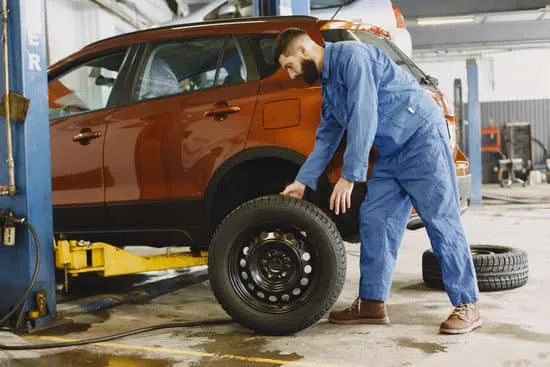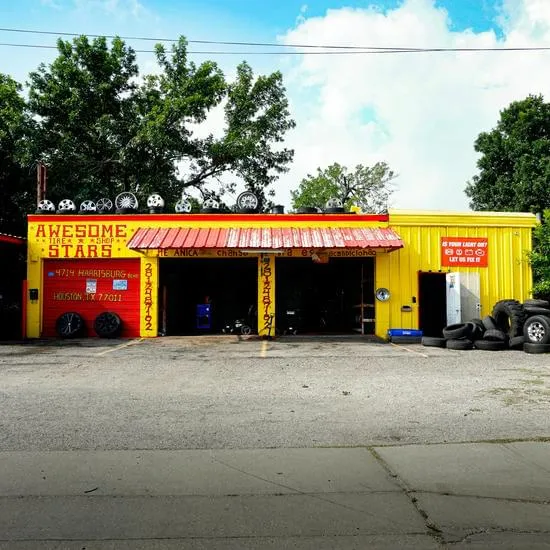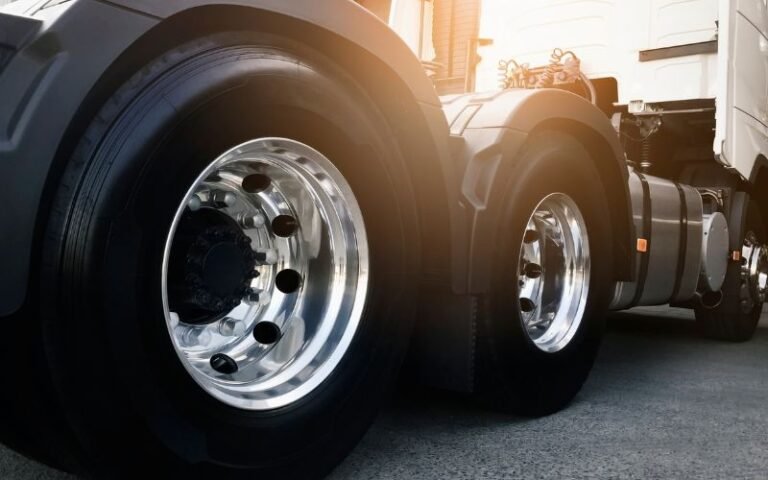Used Tire Shop
In today’s economy, getting the most value for your money matters more than ever, and that’s especially true when it comes to vehicle maintenance. Enter the used tire shop, a go-to destination for budget-conscious drivers who still care about safety, quality, and performance.
Whether you are replacing a single flat, all four tires, or just looking to cut costs without compromising on reliability, this guide will help you navigate the world of affordable old tires.
Why Choose a Shop Old Tires Over Buying New?
Cost Savings Without Compromise
A major reason Americans turn to old tire shops is the significant cost savings they offer. On average, used tires cost 30% to 50% less than new ones, making them ideal for families, college students, rideshare drivers, or anyone looking to keep expenses under control.
Why pay full price when you can find gently used, high-tread tires that perform just as well?
Immediate Availability & Fast Service
Unlike new tire dealers who may need to special order tires, second-hand local tire shops often have ready-to-install inventory for all kinds of vehicles, from compact sedans to SUVs and trucks.
Eco-Friendly and Sustainable
Buying from a Used tire service supports tire recycling efforts and reduces landfill waste. In the U.S., over 300 million tires are discarded each year. Choosing second-hand tires means you are part of the solution.
Secondary Benefits You Did not Expect
- Low-mileage tire options
- Quick mounting and balancing services
- DOT-approved tires with solid tread life
- All-season, winter, or performance tires are available pre-owned.
- Save on disposal fees and installation costs bundled with purchase.
Tire Shop Used vs. New Tire Retailer: A Realistic Comparison
| Feature | Old Tire Retailer | New Tire Retailer |
| Price | 30% 50% cheaper | Full price |
| Availability | Often immediate | May require order |
| Eco-impact | Recycles tires | Produces more waste |
| Lifespan | Varies by tread depth | Full lifespan |
| Warranty | Limited or none | Full manufacturer warranty |
| Selection | Mixed inventory | Full product line |
Pro Tip: If you only need one tire, not a full set, a Quality used tire is a better match to your existing tread pattern.
What to Look For in a Quality Second-Hand Tire
Choosing a reputable used tire store is crucial. Here’s what to check:
Certified Technicians
Look for shops with trained staff who can properly inspect, mount, and balance used tires.
Tread Depth Transparency
Good shops will measure and disclose tread depth before the sale; anything below 4/32 is not recommended.
DOT Code Check
This code tells you the manufacturing date; avoid tires older than 6 years.
No Visible Damage
Avoid tires with cracks, bulges, or exposed cords.
Return or Exchange Policy
Trustworthy shops offer limited warranties or 48-hour exchange windows.
How to Inspect a Used Tire Before You Buy
Even if the shop inspects their tires, it is good to know what to check:
- Tread Depth: Use a penny or depth gauge
- Sidewall Condition: Look for cuts, dry rot, or bubbles
- Bead Area: Inspect the inner lip that contacts the wheel
- Even Wear: Uneven wear alignment issues, or bad suspension.
- DOT Number: Indicates tire age, week/year of manufacture
Do not forget to ask: Has this tire been patched or plugged? Internal damage is not always visible.

Types of Used Tires Available at Shops
- All-Season Tires: Ideal for daily driving in mixed conditions
- Winter Tires: Deep tread for snow and ice grip
- Performance Tires: Designed for speed and cornering
- Off-Road Tires: Great for trucks and SUVs
- Run-Flat Tires: Drive short distances even when punctured
Common Myths About Buying from a Tire Brand
Myth 1: Pre-Owned Tires are dangerous.
Truth: If inspected properly, used tires can be just as safe as new ones.
Myth 2: Used tires wear out quickly.
Truth: Many used tires still have 70,90% of their original life left.
Myth 3: Shops do not guarantee anything.
Truth: Most reputable shops offer limited warranties or guarantees on their tires.
Environmental Benefits of Buying Used Tires
Buying from a used tire dealer is not just smart for your wallet; it is good for the planet.
Lower Carbon Footprint
New tire production involves fossil fuels, rubber, and water. Buying used less the demand for new manufacturing.
Reduce Tire Waste
The U.S. generates 4 million tons of waste tires annually. You can help lower that by buying gently used tires instead.
Encourage Recycling
Tire Used Inspection often partners with tire recycling facilities for the safe disposal of unsellable stock.
How to Find the Best Tire Shop Near You

Use Search Engines & Directories
- Directories, a second-tier shop near me
- Cheap used tires in [City]
- Local outdated tire dealers are open now.
Check Google Reviews
Look for consistent ratings above 4.5 stars and comments about tire quality, price, and service.
Visit In Person
Sometimes, the best tire deals are not online; local shops often have unlisted inventory.
Strong CTA Ideas
- Find a Trusted Chronic Tire Reseller Near You Today
- Call Now for a Free Tire Inspection Quote
- Visit Our Local Store for Quality Tires at Half the Price
- Trade in Old Tires, Get a Discount on Used Sets
How to Maintain Used Tires for Long-Lasting Performance
Used tires can serve you just as reliably as new ones, if properly maintained. Here are expert-recommended ways to ensure your investment lasts:
Check Tire Pressure Regularly
Low or uneven pressure accelerates wear and increases your chance of a blowout. Use a digital tire gauge to check weekly, especially before long drives.
Rotate Tires Every 5,000 To 7,000 Miles
Helps promote even tread wear, especially for front-wheel-drive or all-wheel-drive vehicles.
Inspect for Punctures or Uneven Wear
Get your tires inspected during oil changes to catch slow leaks, nails, or tread issues before they worsen.
Balance and Align
Poor alignment causes tires to wear unevenly and decreases fuel efficiency. Always get an alignment after installation from any Tire Store.
Clean Tires Periodically
Salt, dirt, and road chemicals can crack rubber over time. Wash your tires using water and mild soap every few weeks.
Tips for Getting the Best Value at a Tire Reseller
Here’s how to make sure you do not overpay or get stuck with subpar tires:
Ask for a Printed Tread Depth Measurement
Don’t rely on estimates. Ask for exact 32nds of an inch to compare values.
Check the DOT Code
Avoid tires older than 6 years, regardless of tread life.
Know Your Size & Specs
Your tire size is printed on the sidewall, e.g., 225/60R16. Bring that info with you.
Bundle Services
Some shops include free installation, balancing, or disposal with tire purchase.
Negotiate If Buying Multiple Tires
Most shops are flexible with pricing when you buy a set of 2 or 4.
Understanding the Used Tire Market in the U.S.
The tire industry in America is growing, thanks to inflation, vehicle longevity, and consumer awareness.
Key Industry Stats 2024 To 2025
- Over 30 million used tires are sold in the U.S. each year.
- 43% of drivers surveyed in 2024 said they have bought used tires in the past 3 years.
- Prices for new tires increased by 8.7% year-over-year, while used tire prices have remained relatively stable.
- Demand for eco-conscious auto parts, including reused tires, is up by 22%.
Who Should Consider a Trusted Local Tire Shop?
Not everyone needs brand-new tires. If any of the following apply to you, a Secondary tire Reseller is a smart solution:
- Leasing or Selling Your Car Soon
- Need Just One or Two Tires Replaced
- Fleet Owners or Rideshare Drivers, Uber, Lyft, etc.
- Limited Budget but Need Reliable Rubber
- Own Older Vehicles or Secondary Cars
How Second-Hand Tires and Wheels Stay Safe & Regulated
Used tire sales in the U.S. are regulated at both the federal and state levels. Many shops comply with:
- DOT Regulations (Department of Transportation)
- State Tread Depth Requirements
e.g., 2/32″ minimum depth in most states - Environmental Disposal Guidelines
Shops must dispose of unsellable tires via certified recycling services.
Red Flags to Avoid When Visiting a Tire Store
Not all used tire dealers are created equal. Watch out for:
No Tread Depth Disclosure
Tires with Patches on Sidewalls
Missing or Illegible DOT Codes
The shop refuses to show you the inventory before mounting
No pricing transparency
Always ask for tire history, especially with high-performance or winter tires.
Final Call-to-Action Persuasive Wrap Up
Do not let high prices keep your car off the road. A reliable older tire Workshop can help you save hundreds while staying safe and eco-conscious. Whether you’re looking for a quick replacement, budget-friendly options, or simply want to reduce your environmental impact, used tires are a smart move.
Ready to Roll
- Find a local old tire reseller near me now.
- Speak to a certified technician for tire inspection advice.
- Recycle your old tires and upgrade affordably today
(FAQs)
Are used tires safe to drive on?
Yes, if purchased from a reputable Old tires. Quality shops inspect for tread depth, punctures, age (via DOT codes), and sidewall damage. Many used tires have 70,90% of their original life left and can be just as reliable as new tires when properly installed and maintained.
How can I determine if a used tire is still in good condition?
You should inspect:
- Tread depth (ideally 5/32” or more)
- DOT code to ensure it is less than 6 years old
- Sidewalls for cracks, bulges, or patches
- Even wear across the tread surface.
Pro tip: Always ask the shop to show you the tire before installation.
How much do used tires usually cost?
Used tires typically cost 30% to 50% less than new ones. Prices vary depending on:
- Tire brand and size
- Remaining tread life
- Local market demand
Expect to pay $25,$70 per tire on average.
Can I buy just one used tire, or do I need a full set?
Yes, you can buy a single used tire. This is common when only one tire is damaged. Reputable shops will help you match it with your existing tires in terms of tread pattern and depth.
What are the risks of buying used tires?
Risks include:
- Buying overly worn or aged tires
- Hidden sidewall damage or improper repairs
- No manufacturer warranty
You can avoid these issues by buying only from a certified, trusted tire workshop that discloses full tire history.
Are used tires legal in all U.S. states?
Yes, but regulations vary. Most states require:
- A minimum tread depth of 2/32”
- Tires not to be over a certain age (often 6,10 years)
It’s best to confirm your state’s tire safety guidelines.
Are used tires good for winter or off-road driving?
The tread depth is adequate, and the tires are the correct type. Many Car tire resellers carry:
- Winter/snow tires
- All-terrain and mud-terrain tires
- Run-flat and performance tires
Can I return used tires after purchase?
Policies vary. Some shops offer:
- 48-hour return windows
- Store credit exchanges
- Installation-only refunds
Always ask for the return policy in writing before buying.
Are used tires environmentally friendly?
Yes. Buying used tires helps:
- Reduce tire waste in landfills
- Lower demand for new rubber production
Support local recycling and reuse economies.
It’s a sustainable, eco-conscious decision that still delivers real value.
Citation:
2004 Lexus LS430 Warning lights after new tires | RepairPal. (2024, October 14). RepairPal.com. https://repairpal.com/after-new-tires-installed-check-vsc-trac-off-and-check-engine-lights-on-150







